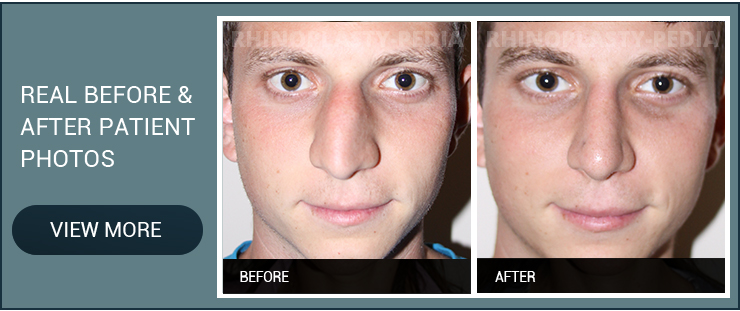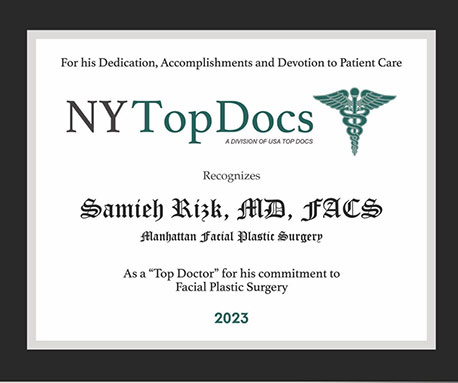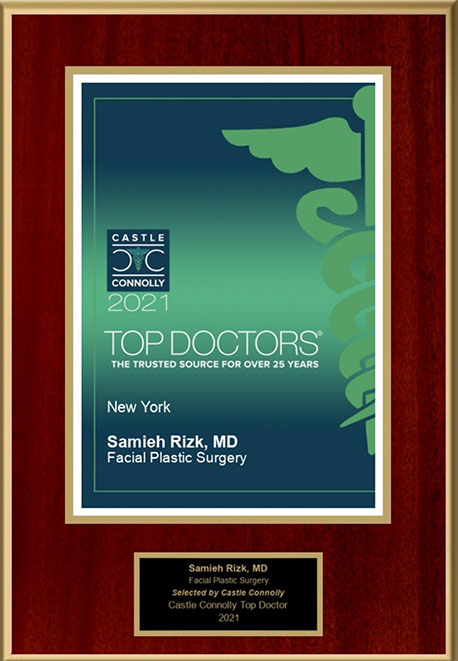Rhinoplasty for a Crooked Nose
In some cases, a patient who has suffered a broken nose may wait too long to have it reset, which can lead to a crooked nose. If the nose doesn’t heal properly, the patient may experience breathing and/or sleep issues. A crooked nose can usually be corrected through rhinoplasty.
Causes of a Crooked Nose
There are a number of potential causes for a crooked nose.
Some people have a crooked nose as a result of trauma sustained as a child. Sadly, in some cases this may include child abuse.
For others the condition is congenital; that is, they were born with a crooked nose. However, not everyone who inherits a crooked nose is born with the trait. Some develop the condition as they develop, due to genetics.
A crooked nose can also develop as a result of complications from a previous nose surgery.
Other potential causes of a crooked nose include internal or external valve collapse.
Complications Associated with a Crooked Nose
Certain complications are commonly associated with a crooked nose. Septal deviation can be both a cause of and a complication of a crooked nose, and can lead to other problems as well, namely nasal obstruction and related breathing problems. In fact, restricted airflow is often a sign that a person has a deviated septum.
In cases where a patient has both a deviated septum and broken nasal bones, the two are often treated together. Failure to have these issues addressed often leads to a crooked nose, breathing problems and sleep problems.
Aesthetic appearance is another issue associated with a crooked nose. This issue can usually be addressed during the procedure (rhinoplasty or septorhinoplasty) that is performed to repair the nasal bones and straighten the septum.
Note that reconstructive surgery cannot be performed immediately after the nose is broken. The swelling must subside before having surgery. When a patient has bruising and swelling of the nose, the surgeon will often decide to wait for a few weeks or months before performing surgery.

Correction of a Crooked Nose
Any number of nose surgery techniques may be employed to correct a crooked nose. It all depends on the patient’s individual needs. Some patients have a deviated septum while others have broken nasal bones or, less often, displaced nasal tip cartilages. Some have several issues that need to be addressed. As a result, the surgeon may opt to perform rhinoplasty, septoplasty or septorhinoplasty.
In any surgery nose surgery performed to correct a crooked nose, the surgeon will seek to restore nasal airway function and proper breathing, restore symmetry and create an aesthetically attractive nasal appearance.
If the surgeon determines that rhinoplasty is the proper approach, the nasal bones will be centered along the midline; the surgeon usually attempts to align the midline of the nose with that of the teeth.
However, in many cases the septum needs to be straightened as well; if it is not, it may continue to push on the nasal bones. In this case a procedure called septorhinoplasty will be performed, in which both the nasal bones and septum are straightened and other measures may be taken, such as adjusting or augmenting the tip cartilages.
Typically, small internal incisions will be made to access the tissue and structures that are damaged or deviated. Your surgeon may elect to use 3D technology to obtain a better view of the tissues. This will allow him or her to minimize trauma to the tissues, thereby reducing recovery time.
Regardless of which nose surgery technique(s) is employed, special suturing techniques will be used. In some cases osteotomies (controlled breaks) may be necessary. Spreader grafts may be used in the middle portion of the nose.
If there is nasal obstruction, the cheek may be lifted on the side of the nose that is obstructed. If there is an internal valve collapse, strips of cartilage may be placed in the collapsed area, or it may be necessary to reattach certain portions of cartilage to the septum.
Straightening a crooked nose is a highly challenging procedure. Special measures often need to be taken in order to prevent the septum from moving back to its original (crooked) position. Furthermore, in congenital cases, other facial features may be asymmetric. If so, this will need to be taken into account. As such, it is imperative that you choose an experienced facial plastic surgeon to perform your procedure.
Also, if you don’t have your nose operated on in the first 10 days after the fracture took place, you will likely need to wait for a period of months before undergoing surgery to correct your crooked nose.








